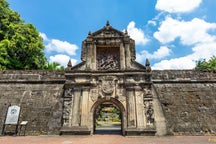
Maragondon Church, officially known as the Our Lady of the Assumption Parish Church, is a historical treasure nestled in the quiet town of Maragondon, Cavite Province.
Built in the early 18th century by Jesuit missionaries, it stands as one of the best-preserved examples of colonial Baroque architecture in the Philippines.
Located in the southern part of Cavite Province, this centuries-old church is a key stop for travelers exploring heritage destinations near Manila City. Inside, you'll find elaborately carved retablos (altarpieces), antique religious icons, and intricate wooden details that reflect a fusion of local artistry and Spanish influence.
Whether you’re coming from Manila City or pairing it with beach destinations in Batangas City, this heritage site offers a meaningful travel experience beyond the usual tourist trail.









